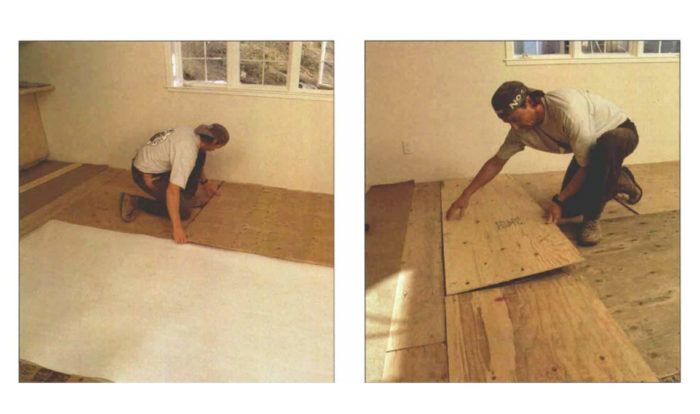Installing Hardwood Floors over Radiant Slabs
It can be done successfully if your floor isn't too hot, and the wood is put down dry on a dry slab and subfloor.

Synopsis: Flooring specialist Don Bollinger describes the process of installing hardwood flooring over a concrete slab that contains a radiant-floor heating system. Layers of plywood provide the support for the flooring, but understanding the impact of moisture content in the building materials is key. A sidebar discusses special problems for floor installers in the Southwest.
As a hardwood-flooring specialist, I meet lots of builders and architects who ask me the same question: What do I think about installing a wood floor over a radiant-heated slab? I tell them there’s no reason not to do it—as long as you understand how wood reacts to moisture and install the floor system to minimize the effects of moisture on wood.
The best hardwood-floor installations over radiant heat have three things in common—the radiant system is designed, installed, and operated with the flooring in mind, the radiant slab and the wood on it are acclimated properly, and the flooring has adequate underlayment. I’ll explain more about these three keys to a good wood floor later, but first it’s important to take a look at wood’s hygroscopic nature.
Wood and water
Those involved in the installation of a wood floor must understand that wood is hygroscopic, meaning that when wood is drier than its surroundings, it absorbs moisture, and when wood is wetter than its surroundings, it releases moisture. As wood absorbs moisture, it expands; as wood releases moisture, it contracts.
Heat quickens moisture movement into and out of wood and intensifies the effects of moisture moving through the wood’s cell walls. Radiant heat comes through the floor, so minor humidity shifts equate to significant changes in the size and the appearance of the wood flooring installed over it. Therefore, with radiant heat, expect exaggerated movement of the flooring.
If you live in an area where summers are humid, the radiant slab will expel this moisture during the first month or two of the heating season. The flooring will absorb this moisture, and some cupping or crowning will occur. To mitigate such problems, gradually heat the slab prior to the onset of the heating season by 2° to 3° per week. Regardless of where you live, air conditioning or dehumidification systems will prevent a home from becoming excessively humid.
Conversely, you should expect some gaps in the flooring toward the middle or end of the heating season when the heat has dried out the radiant mass and the wood floor.
Sometimes radiant heat can dry out the air in your house. If you elect to use a humidification system, keep it well-maintained and use it sparingly when the radiant system is off.
For more photos and details, click the View PDF button below:
Fine Homebuilding Recommended Products
Fine Homebuilding receives a commission for items purchased through links on this site, including Amazon Associates and other affiliate advertising programs.

Plate Level

Original Speed Square

Smart String Line


























